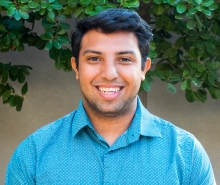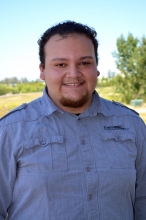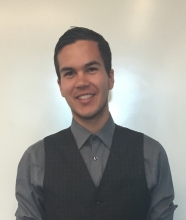Victoria Arias
 |
Major: Applied Mathematics
Home City: Clovis, CA
Contact: varias4@ucmerced.edu
Faculty Mentor: Professor Roummel Marcia
|
Victoria Arias is a second year undergraduate student majoring in Applied Mathematics, emphasizing in Computational Biology, and minoring in Physics. She hopes to graduate from UC Merced in the Spring of 2018 and eventually earn a PhD in Mathematics. Victoria worked with UC Merced’s Society of Hispanics in Professional Engineering chapter as the Pre-College Committee Leader for the 2015 Regional Leadership and Development Conference event, where she designed and organized three workshops geared towards inspiring over 50 local high school students to pursue higher education. Victoria has also been a Mathematics and Physical Sciences Program Scholar since 2014, and serves as the Community Relations and Outreach Co-chair for the Society for the Advancement of Chicanos and Native Americans in Science, as well as Secretary for the Society of Physics Students at UC Merced. Beginning in Summer 2015, Victoria became a Data-Enabled Science and Computational Analysis Research, Training and Education for Students (DESCARTES) Program Scholar. In her spare time, Victoria enjoys playing different instruments, especially the cello and ukulele, and seeing her family.
Exploration of Cycling Newton's Method
Victoria Arias, Michael Stobb, and Roummel F. Marcia, PhD; School of Natural Sciences, University of California, Merced
Newton’s Method is a numerical technique for finding approximations to roots of a function. Although Newton’s Method requires solving for the derivative of the function being evaluated, its main advantage is its quadratic convergence. However, converging to a single point is not always guaranteed; Newton’s Method will fail if it enters a cycle, or if it diverges to positive or negative infinity. In order to test the convergence behavior of Newton’s method, we provide an example where Newton’s Method converges and diverges, depending on the initial point. Furthermore, we investigate a particular behavior called “cycling”, which occurs when the algorithm gets caught in a loop, and cycles back to the initial point. Since generating examples for which Newton’s Method cycles is challenging due to how finite-precision arithmetic affects our calculations, we focus on presenting examples that will cycle even in a finite- precision environment. Our goal is to explore these special cycling cases in order to test the robustness of Newton’s Method.
Elizabeth Arikawa
| |
Major: Computer Science and Engineering
Home City: Roseville, CA
Contact: earikawa@ucmerced.edu
Faculty Mentor: Professor Benjamin P. Bowen
|
Elizabeth Arikawa is a third year computer science and engineering major at UC Merced. She is currently working at Lawrence Berkeley National Labs as a part of the OpenMSI project this summer. As part of the CAMP program she hopes to gain more experience in the field.
Natalie Azevedo
| |
Major: Applied Mathematics
Home City:
Contact: nazevedo@ucmerced.edu
Faculty Mentor: Professor Suzanne Sindi
|
Natalie Azevedo is a fourth year undergraduate in Applied Mathematics and does research in Computational Biology. She expects to graduate in the spring of 2016. Natalie also spent 2 years in the Math and Applied Physical Sciences Program at UC Merced and will also be completing her second year as a student in the Undergraduate Research and Mentoring Program. These Programs have helped her develop professional and leadership skills along with developing skills to do research. Natalie enjoys spending time with her family and doing outdoor activities. She also likes to cook, mostly so she can eat.
Carter Brown
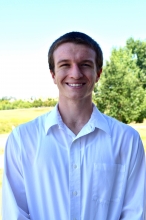 |
Major: Mechanical Engineering
Home City: San Clemente, CA
Contact: cbrown47@ucmerced.edu
Faculty Mentor: Professor Yanbao Ma
|
Carter Brown is a senior at UC Merced studying Mechanical Engineering. His research is on thermal management of energy systems, specifically Lithium-ion batteries used in electric vehicles. Carter transferred to UCM from Saddleback College where he was a member of the Orange County Bridge 2 Engineering and a National Community Aerospace Scholar. After completing his undergraduate work, Carter would like to attend graduate school and conduct research on new forms of spacecraft propulsion. In his spare time Cater enjoys spending time with friends, going to the beach, and playing basketball.
Thermal Management of Electric Vehicle Batteries Using Aluminum Minichannels
Cater R. Brown, Jian Xu, PhD, and Yanbao Ma, PhD; School of Engineering, University of California, Merced
Effective thermal management of lithium ion batteries is critical to the safety and longevity of electric vehicle (EV) power supplies. In this study, active cooling using aluminum minichannels and circulated water was applied to a Li-ion battery module. An insulation layer was used to isolate the battery module from the environment. Heat management influenced by the effects of various insulation thicknesses, thermal conductivities, battery discharge rates, and water flow rates was investigated using COMSOL Multiphysics. The maximum temperature, temperature differences, and average temperature of the batteries was collected in order to determine optimal size and thermal properties of the insulation. The results of this study will be experimentally validated in the future and expanded to larger modules which can lead to better and less expensive cooling systems for EV batteries.
Ashley Cato
| |
Major: Computer Science and Engineering
Home City:
Contact: acato@ucmerced.edu
Faculty Mentor: Professor Benjamin Bowen
|
Ashley Cato is a third year CSE Major. She is expected to graduate in the spring of 2016. Ashley has spent her three years in college honing her skills as a programmer by taking on challenges at Hack-a-thons. She has recently started teaching young elementary students the wonder of coding, telling them that you don’t need to be a programmer to know how to code. Ashley enjoys spending time with her family and every now and then loses herself in a good book or engaging project.
Jocelyne Fadiga
| |
Major: Chemistry-Mathematics
Home City: Oakland, CA
Contact: jfadiga@ucmerced.edu
Faculty Mentor: Professor Jan Novak
|
Jocelyne Fadiga is a fourth year undergraduate in Chemistry with a minor in applied math. She expects to graduate spring 2017 and pursue an MD/PhD. Jocelyne enjoys adventure and discovery, and it is what led her to leave the comfort zone of her family and move to the United States six years ago to pursue her education. She hopes to make health care accessible and affordable to the most impoverished communities her in the United States as well as back in the Ivory Coast where she is originally from. Jocelyne has had many jobs from customer service to tutoring and babysitting, but she believes her proudest moments were as a mentor for high school dropouts being given a second chance at graduating through the Gateway to College program in Oakland. Jocelyne is passionate about science, social justice, traveling and music. When she is not doing science however, Jocelyne loves to inspire and encourage people to pursue their dreams. Through the 2015-16 summer research program, Jocelyne has gained laboratory experience and acquired the technical skills that will giver her an edge in her graduate school applications. She has also met incredible people and witnessed firsthand what it means to be a scientist.
Cristhian Gutierrez Huerta
Cristhian Gutierrez is a third year Applied Mathematics Major with an emphasis in Computational Biology. He hopes to graduate in Spring 2017. During Cristhian's second year he had the opportunity to study abraod in Tokyo. While there, he joined and particiated in various extracurricular activities. He joined a dance team, participated in a homestay, and had the opportunity to teach in English to Japanese high school students. Throughout his academic career, he has participated in various academic programs. He has been a part of Fiat Lux, MAPS, URM, and is now a part of UROC's CAMP Program. He is also a member of Kappa Sigma Fraternity. For this summer he has been given the opportunity to work for the Joint Genome Institute (JGI) in Walnut Creek. JGI is a government lab funded by the Department of Engergy. Currently, he is working with a team of scientists to properly allocate taxonomic identifications across the three domains of life. The main goal of the project is to classify known organisms as well as identify if there is a new phylogenetic category that has yet to be explored.
Juan Guerra
 |
Major: Computer Science and Engineering
Home City: Inglewood, CA
Contact: jguerra2@ucmerced.edu
Faculty Mentor: Professor Jonathan Sprinkle
|
Juan Guerra is going to be a fourth year undergraduate student majoring in computer science and engineering planning to implement computer programming into the transportation system. He expects to graduate in the spring of 2017. He is currently working with autonomous vehicles and researching the use of cognitive radios to improve vehicle to vehicle communications. Juan is the first person in his family to attend a university. He has done volunteer work in his neighborhood church as an assistant and was part of the Energy Service Corps where he worked with the Merced community to reduce energy waste. Juan hopes to use his opportunity in the CAMP program to further learn programming and engineering, but more importantly, he wants to experience hands on experience in the field. When Juan is doing school work, he enjoys talking to his family and friends about random topics and cooking dinners for his family. His family consists of his mother, father, and younger sister and brother.
Amy Hang
| |
Major: Biological Sciences
Home City:
Contact: ahang@ucmerced.edu
Faculty Mentor: Professor Timmy Lee
|
Angiotensin Receptor Blockade Improves Non-esterified Free Fatty Acid and Triglyceride Accumulation in a Rat Model of Diet-induced Obesity Fed a High Fat Diet
Amy Hang, Andrew Lee, and Rudy M. Ortiz, PhD; School of Natural Sciences, University of California, Merced
Consumption of a high fat diet (HFD) overburdens the liver’s storage of fatty acids, contributing to non- esterified free fatty acid (NEFA) and triglyceride (TG) accumulation, thus, leading to the development of hepatic steatosis and metabolic syndrome (MetS). Treatment with angiotensin receptor blocker (ARB) was previously shown to decrease hepatic lipid content, possibly improving hepatic steatosis. However, the impact that ARB treatment has on fatty acid storage and the development of hepatic steatosis in a model of MetS fed a HFD are unknown. To test the hypothesis that ARB decreases hepatic fatty acid storage in a model of MetS fed a HFD, the following groups were studied: 1) Long-Evans Tokushima Otsuka (LETO; control) normal diet (ND), 2) Otsuka Long-Evans Tokushima Fatty) OLETF ND, 3) OLETF HFD (62% fat in food), 4) OLETF ARB (10mg olmesartan/kg/day), and 5) OLETF HFD+ARB. HFD treatment increased body mass (14%) and liver mass (9%) relative to OLETF. HFD+ARB treatment decreased body mass (48%), liver mass (9%), plasma NEFA (17%), plasma TG (41%), and hepatic TG (32%) compared to HFD. These results demonstrate that ARB decreases hepatic TG accumulation in rats fed a HFD but were unable to completely restore them to control levels, suggesting that other obesity-associated factors are contributing to the impairment.
Jaspreet Johal
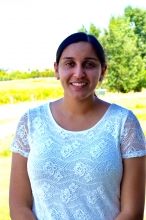 |
Major: Biological Sciences
Home City: Hilmar, CA
Contact: jjohal2@ucmerced.edu
Faculty Mentor: Professor Eric A. Walle
|
Jaspreet Johal is a second year human biology major, psychology minor from Hilmar, CA. Over the summer, she helped Dr. Eric Walle and grad student Peter Reschke research infant emotional development specifically looking at whether 12 and 18 month old infants have certain expectations of what emotions are likely to follow after common events. She expects to graduate from UC Merced in the Fall of 2017. Jaspreet has also spent the last 6 years volunteering her time and giving back to her community. She also worked at her local doctor’s office where she realized her interest in infant development. Jaspreet enjoys playing volleyball with her friends and family and traveling to new places.
Coordinating Attention in Parent-Child Social Interactions
Jaspreet K. Johal, and Eric A. Walle, PhD; School of Social Sciences, Humanities and Arts, Univeristy of California, Merced
Infants’ ability to coordinate attention with their caregiver in reference to objects in the environment is an important aspect of development. Previous research indicates that walking infants are better at following adult attentional cues than crawling infants, independent of age. The present study examined a possible mechanism that might account for this difference. Twelve-month-old crawling (n=15) and walking (n=18) were observed interacting with their caregiver during a naturalistic observation. Duration of episodes of infant-caregiver joint engagement was coded. Additionally, a joint-attention paradigm assessed infants’ ability to follow an experimenter’s gaze to locate an object on 8 separate trials. Hierarchical multiple regression examined the main effects of infant locomotor development (i.e., crawling vs. walking) and average duration of joint engagement with the caregiver for predicting performance in the gaze-following paradigm. Infant locomotor development (ß=0.37, p=.03), but not average time of joint attention episodes, predicted infant performance in the joint attention assessment. A significant interaction between infant locomotor status and average duration of joint attention episode was also present, ß=1.47, p=.048. Walking infants who had longer average episodes of coordinated joint engagement with the caregiver performed better in joint-attention, but the reverse was apparent for crawling infants. Further experiments can be performed to investigate possible explanations to these findings. By testing infants’ ability to regulate attention and avoid distractions may help explain why walking infants had longer average episodes of joint attention.
Pablo Juarez
 |
Major: Biological Sciences
Home City: Ventura, CA
Contact: pjuarez@ucmerced.edu
Faculty Mentor: Professor Rudy Ortiz
|
Pablo is a third year undergraduate student majoring in Molecular Biology and minoring in Natural Sciences education. He is the first in his family to go to college, and wants to serve as a good example for not only his two younger brothers, but all first generation college students to follow. Upon completing his studies at UC Merced in Spring of 2017, Pablo hopes to attend medical school. For Pablo, giving back to the community is a privilege and feels that becoming a doctor would be a great way to do so. This summer he will be working under the guidance of Dr. Rudy Ortiz to study the effects of oxidative stress in the liver of insulin resistant rats aside from school, Pablo enjoy spending time with family and playing sports.
Contributions of Adrenocorticotropic Hormone Infusion to Glucorticoid-Receptor Mediated Lipolysis of Northern Elephant Seal Pups
Pablo Juarez, Jose Pablo Vasquez-Medina, Debby Lee, Daniel E. Crocker and Rudy M. Ortiz, PhD; School of Natural Sciences, University of California, Merced
Northern Elephant Seals (NES) experience a prolonged 2-3 month fasting period and rely primarily on the oxidation of fatty acids to meet its energetic needs. This fast is characterized by an increase in cortisol and non- esterified fatty acids (NEFA’s). However, the functional relevance of this increase in cortisol and its influence on the glucocorticoid receptor in NES is not defined. We hypothesized that ACTH infusion increases lipolysis in NES. The contributions of cortisol and its receptor (GR) were assessed by exogenous infusion of ACTH and/or concurrently blocking the glucocorticoid receptor in the following groups: 1.) Control, 2) ACTH 3) GR-blocker (mifepristone), and 4) ACTH+GR-blocker. Plasma and adipose biopsy samples were collected at days 0 (T0;immediately prior to infusion) and 6 (T6). Mean plasma cortisol concentrations decreased both 41% (263±36 vs 154±13nM) in the ACTH-infused group and 21% in the combo group (215±82 vs 169 ± 41nM), but remained constant in the control (142±12 vs 155 ± 52) and GR-blocker ( 210.±74 vs 201±33) groups. Mean NEFA levels increased 38% (0.84 ± 0.13 vs 1.16 ± 0.06mM) in the ACTH-infused group suggesting glucocorticoids contribute to increased lipolysis. Collectively, this data suggests that the fasting-associated increase in cortisol is an important contributing factor in stimulating lipolysis through the glucorticoid receptor.
Kyle Kabasares
Kyle is a third year undergraduate student majoring in Physics. He expects to graduate in the Spring of 2017 and is currently researching further potential applications for liquid crystals. Kyle enjoys learning and being a student as he has made the Dean’s List every semester since entering UC Merced. He also enjoys playing his piano and fanatically supports his hometown baseball team, the San Francisco Giants.
Investigating Quantum Dot Self-Assembly in a Cholesteric Liquid Crystal
Kyle Kabasares, Devon Zerbe, Tayebeh Rahinasab, and Linda S. Hirst, PhD; School of Natural Sciences, University of California, Merced
An ongoing goal in condensed matter physics is directly controlling the self-assembly of quantum dots (QDs) into specific structures while maintaining their original electronic and optical properties. One method of controlling the self-assembly of QDs is to disperse them within a liquid crystal (LC) medium and apply a variety of thermal stimulations. Recently, our lab developed a method of creating spherical, vesicle-shaped QDs within a nematic LC. Vesicle formation depends on the QD concentration in the LC as well as the LC’s intermolecular dispersion forces and thermal properties. In this project, we investigate the dispersion of CdSe/ZnS (core/shell) QDs in a cholesteric LC (CLC) medium and predict the QD aggregations to cluster near the LC defects. By varying parameters such as QD concentration and temperature, we exploit the CLC's sensitive optical and thermal properties. To observe these effects, we apply spectrophotometry, polarized optical microscopy, and fluorescence microscopy. These techniques highlight the aggregation of QDs within the host CLC and identify how LC phase transitions determine where QD aggregates form. This work illustrates the possibility of new LC-based QD devices, and we will continue by exploring the lasing potential of our sample.
Ramon Martinez
Ramon Martinez is fifth year chemical science major with an environmental emphasis. As an undergraduate at UC Merced, Ramon has been featured on the dean's and chancellor;s list on multiple occasions. He is currently working alongside Dr. Ryan Baxter developing new reaction methods with potential applications in pharmaceutical/medicinal fields. Ramon plans to graduate in May of 2016. Using his experienced gained while being an undergraduate researcher; Ramon wants to go to graduate school to receive a Master's degree. Eventually, he would like to be able to teach and help guide the next generations of scientists. Ramon's parents immigrated to the US from Mexico in order to give their children a proper education because they themselves never received one. Out of four brothers and sisters, Ramon is the first to attend college. This is what drives Ramon to give each day his best. In his free time, Ramon likes to hang out with friends where he plays video games, watches movies, laughs, and creates new memories.
Silver-Catalyzed Synthesis of Fluorinated Pharmaceutical Precursors via Radical Pathways
Ramon Martinez, Alyssa Hua, Jerry Vue, and Ryan Baxter, PhD; School of Natural Sciences, Univeristy of California, Merced
Research and development of pharmaceutical precursors have always been integral components in the advancement of organic synthesis. Especially with direct a-alkylation of heterocyclic aromatic compounds via metal catalyzed C-H radical reactions, which offer a controlled pathway to form these pharmaceutical precursors. Recently, addition of fluorinated hydrocarbons to aromatics is showing some great changes to the pharmaceutical industry because fluorinated natural compounds show outstanding properties including: modulating basicity/ acidity of parent molecule, lipophilicity, and modulation of metabolic stability. The process of direct a-alkylation through radical species is carried out in a mechanism similar to Michael addition of nucleophiles and electrophiles; in which the radical species formed is the nucleophile and the electron deficient aromatic is the electrophile. These reactions are typically metal catalyzed and controlled in order to synthesize desired molecules, but most procedures used today are not viable in large scale or even small scale synthesis, because procedures call for inert atmospheric conditions, large molar quantities of substrates, or use of expensive catalysts. In this research conducted, we have investigated methods that will allow us to optimize a general procedure that is both viable, efficient, and most of all applicable to many combinations of heterocyclic aromatics and a-proton sources. Our research focuses on using silver nitrate as the catalytic source and on adjustment of reaction variables in order to achieve the optimized procedure. With this generalized a-alkylation procedure we are synthesizing fluorinated precursors, which usually take multiple steps, in just one concise aqueous step.
Christian Montes
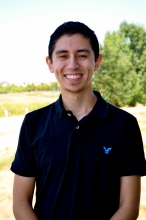 |
Major: Applied Mathematics
Home City: Bakersfield, CA
Contact: cmontes5@ucmerced.edu
Faculty Mentor: Professor Arnold Kim
|
Christian Montes is a third year undergraduate student majoring in applied mathematics with an emphasis in engineering. He has served as vice president of one of the largest engineering organization on campus, The Society of Hispanic Professional Engineers (SHPE) for the 2015-2016 academic year. Christian has also helped plan and organize a regional conference hosted by SHPE, as well as being its host speaker. He also tutors in mathematics through the same organization and helps give back to high school students by preparing them for college. Christian is working with Professor Arnold Kim researching multiple scattering of light through random media. He hopes to enhance his knowledge of mathematics and apply it to have more experience for any current or future research. Christian enjoys running, playing guitar and drums, spending time with his family, and helping others. He plans to attend graduate school after graduating from UC Merced.
Time Dependent Multiple Scattering of Light Through Random Media
Christian A. Montes, and Arnold D. Kim, PhD; School of Natural Sciences, University of California, Merced
We extend the Kubelka-Munk equations to include time dependent problems. We use this extension to model the diffuse reflectance due to a short pulse of light incident on a scattering and absorbing medium. By analyzing this problem, we develop a method to recover absorption and scattering properties of the medium from time-resolved measurements of backscattered light. The key to this problem is a careful analysis of the time scales inherent in the problem. By applying this approach to the generalized Kubelka-Munk equations, we can explain the existence of two time scales in the diffuse reflectance that have been recently found experimentally.
Guillermo Najarro
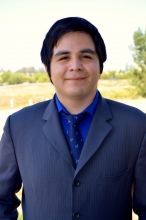 |
Major: Biological Sciences
Home City: Modesto, CA
Contact: gnajarro@ucmerced.edu
Faculty Mentor: Professor Clarissa Nobile
|
Guillermo Najarro is a second year undergraduate at the University of California, Merced. The major that he has wished to learn and claim his Bachelor's of Science in is Molecular Biology. The main focus he wishes to learn with his degree is research the many fields that fascinate him. These subjects include evolution, chemical biology, bacteria, and stem cells. The expected graduation year is spring 2017 which would finish four years of education at UC Merced. Guillermo’s achievements include being on the Dean's Honor List in the 2013-2014 School year. Another achievement was being able to be a member of National Society of Collegiate Scholars in the year 2014. Guillermo also enjoyed being able to perform with Blue Devils B Drum Corp which included performing at Lucas Oil Stadium. Guillermo’s hobbies and activities include running, playing the trumpet, reading, and playing video games.
Examination of Symbiotic and Antagonistic Relationships between the Fungus Candida albicans and Bacterial Species
Guillermo Najarro, Portillo Jr., Megha Gulati, and Clarissa J. Nobile, PhD; School of Natural Sciences, University of California, Merced
The human body is home to many kinds of microorganisms, such as fungi and bacteria. In addition to existing in the non-pathogenic form, some microorganisms also exist as pathogens. When the balance of the microbiota is disturbed in the human body, these pathogens are given the opportunity to infect and populate. The most common opportunistic pathogen of humans is Candida albicans, which attaches to biotic and abiotic surfaces, and creates complex structures called biofilms. C. albicans biofilms are three-dimensional microbial communities consisting of different C. albicans cell types encased in a self- secreted extracellular matrix. The structure makes it difficult to clinically treat C. albicans due to the protection it offers. The biofilm can also house other pathogens, like Staphylococcus aureus, indicating that these species could exist in a symbiotic relationship with C. albicans. Additionally, it is possible that other members of the human microbiota limit the growth of C. albicans. Example bacterial species that are capable of such antagonistic interactions with C. albicans are the Lactobacillus species. These species are capable of secreting chemicals known to inhibit the growth of pathogens. Here, we explore the interactions between C. albicans and potential synergistic and antagonistic bacterial species in the context of biofilms. The anticipation is that the growth of C. albicans will be stimulated by the presence of S. aureus; while the growth of C. albicans with Lactobacillus species will be inhibited. Understanding how microorganisms interact in the human body will be highly relevant to the treatment of infectious disease.
Kimberly Nguyen
Bryan Rangel
| |
Major: Biological Sciences
Home City: Sacramento, CA
Contact: brangel4@ucmerced.edu
Faculty Mentor: Professor Mike Cleary
|
Bryan Rangel is a fourth year undergraduate student studying Molecular and Cellular Biology. As a member of Dr. Mike Cleary’s research team, he helps study the complex nervous system development in the fruit fly, Drosophila melanogaster. His main interest is in neurogenesis and neurodegeneration, and hopes to pursue research to aid patients who suffer from neurodegenerative disorders. This current summer he decided to explore a new field and partook in an internship, provided through the CAMP program, at the Joint Genome Institution located in Walnut Creek. Here he focused on the utility of single-cell methods to access genetic material of uncultivated taxa of interest and decipher their possible roles in the environment. Along with his research, Bryan also spends his time teaching science to elementary schools in the community through a program known as From Quantum to Quasar. He also volunteers his time as President of the professional medical fraternity, Phi Delta Epsilon. Aside from his studies, some of Bryan’s hobbies include bouldering at local rock climbing gyms, camping with his family, cycling with friends, and playing soccer with his intramural team.
Ryan Torres
Investigating Cryptic Species of Green Stink Bugs
Ryan Torres and Andrew Joyce, PhD; School of Natural Sciences, University of California, Merced
Chlorochroa uhleri is a species of green stink bug (GSB) in the insect family Pentatomidae. Feeding by GSBs contributes to damaging agricultural crops. These insects can be managed through the use of pheromones and biological control, rather than through pesticides. However, management strategies such as pheromones and biological control are typically species- specific. This project investigates whether there are cryptic species in this species of GSB. Cryptic species are species which appear identical to one another morphologically, but are genetically and behaviorally divergent. The genetic diversity among individuals in each of these species by sequencing the mitochondrial DNA cytochrome oxidase I gene (COI) Genetic divergence of 2-3% or more among individuals suggests there may be cryptic species. The results from our mitochondrial DNA work found evidence for cryptic species of GSBs. These results will improve the management of GSBs using pheromones or biological control, resulting in reduced pesticide use.


